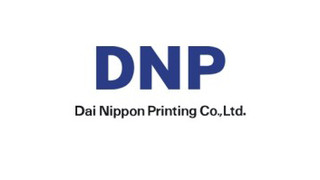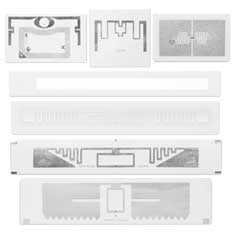March 16, 2017
Dr. Manfred Mueller
You may have caught the press release this morning — but in case you missed it, Identiv’s ultra high-frequency (UHF) radio frequency identification (RFID) tags have been incorporated into a new system that monitors critical infrastructure and detects cracks in bridges and tunnels. The tag was developed for Identiv partner Dai Nippon Printing Co., Ltd (DNP).
Who Is DNP?
 DNP was established in 1876 as the first full-scale printing company in Japan. Expanding printing technology has been a fundamental DNP policy since the 1950s. The company has diversified operations to include packaging, decorative materials, electronic components, and information media supplies. By combining innovative technology and expertise, DNP offers products and services that can help fulfill dreams, enrich everyday life, and enhance communication. DNP has become an integral part of the information communication industry.
DNP was established in 1876 as the first full-scale printing company in Japan. Expanding printing technology has been a fundamental DNP policy since the 1950s. The company has diversified operations to include packaging, decorative materials, electronic components, and information media supplies. By combining innovative technology and expertise, DNP offers products and services that can help fulfill dreams, enrich everyday life, and enhance communication. DNP has become an integral part of the information communication industry.
Identiv’s UHF Tag Portfolio
 Identiv’s UHF Tag portfolio is built around a comprehensive set of optimized designs for applications across industrial markets including asset tracking, logistics and parking access. UHF technology uses radio frequency spectra which allow reading distances of several meters (equivalent to several dozen feet), depending on the size of the tags and the operating power transmitted by the UHF reader.
Identiv’s UHF Tag portfolio is built around a comprehensive set of optimized designs for applications across industrial markets including asset tracking, logistics and parking access. UHF technology uses radio frequency spectra which allow reading distances of several meters (equivalent to several dozen feet), depending on the size of the tags and the operating power transmitted by the UHF reader.
The History of Japanese Infrastructure
In Japan, the majority of tunnels and bridges were built during the high economic growth period of the 1960s, meaning they are quickly becoming too old for continued use. As a result, there is an increase in accidents due to decrepit concrete, which is a huge, dangerous problem. Local government and transportation entities are under regulation to maintain inspections, however, the cost of such inspections is incredibly high due to complex testing equipment and the skill of the laborers performing such testing.
Finding the Right Solution
In direct response to this growing issue, DNP partnered with Identiv and developed an infrastructure-monitoring RFID inlay that can detect structural cracks, leveraging a powerful UHF chip equipped with tamper detection capability. This long reading distance inlay is glued to areas of concern on a concrete structure (i.e., areas suspected to be cracked or that may be extended in the near future). The inlays receive radio waves and the system can monitor the condition to avert disasters before they occur. DNP has developed the unique adhesive for the sheets that are attached to the concrete, which cures the agent via irradiation with ultraviolet rays (i.e., sunlight) or fluorescent light.
 Unlike traditional, cumbersome testing techniques, the new monitoring system can read all of the information collected by the inlay sheets at once via a UHF reader/writer, dramatically reducing inspection time, and the UHF range of Identiv’s tags allows for long communication distance. Small cracks are difficult to detect through visual inspection alone, and with Identiv’s technology, inspectors without special skills can make an accurate assessment, saving time and money, and potentially saving lives. The data collected is then transferred to local PCs for a full inspection report.
Unlike traditional, cumbersome testing techniques, the new monitoring system can read all of the information collected by the inlay sheets at once via a UHF reader/writer, dramatically reducing inspection time, and the UHF range of Identiv’s tags allows for long communication distance. Small cracks are difficult to detect through visual inspection alone, and with Identiv’s technology, inspectors without special skills can make an accurate assessment, saving time and money, and potentially saving lives. The data collected is then transferred to local PCs for a full inspection report.
Identiv is proud to contribute our UHF RFID tag technology and partner with DNP on this solution. Detecting concrete cracks at an early stage will not only save the Japanese government from a growing financial burden, more importantly, it will save lives.
